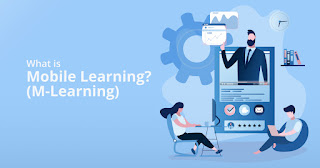Mobile learning overcomes limitations of authoring tools
The smartphone is not just a device but also a revolution. So, the question arises of how the L&D industry gets benefits from it. The L&D sector is the same who utilize the authoring tools. However, as every coin has its two sides, authoring tools have limitations too. Hence, how mobile learning can make its place in the industry by overcoming authoring tools’ limitations.
There are
plenty of features making mobile learning unique. Right from the customized LMS to
microlearning videos, engaging resources make mobile learning solutions
a clients’ preferred option. With this, learners will not have to grind their
brains into tedious eLearning modules. What more? Mobile learning modules
rectifies the authoring tools’ limitations. Let us explore how.
Drawbacks of authoring
tools
Lackluster results without
technical expertise
Any
authoring tools demand technical literacy. It is because quality implementation
produces an impeccable final product. Also, available eLearning software has
high-quality engaging elements. So, to deal with them, companies require
professional trainers which dent their capital resources. Also, many low cost
authoring tools do not ensure quality solutions.
Companies
minimize financial investment by choosing low quality or free authoring tools.
As a result, disaster awaits at the doorstep! Disengagement of learners and
less learning outcomes becomes a daily challenge. This drawback also puts brand
integrity at the risk. So, avoid disaster and pick the right resource for the
right program.
Less creative control
Taking
charge of every detail is a must for quality training. However, authoring tools
have limited interactive features that give less creative freedom. Here,
clients simply drag and drop interactions and tools deliver the output. So,
there is no option to modify or alter the final output. Besides, rectifying
technical glitches in this kind of output is impossible.
It is an
undeniable fact that authoring tools have interactive features. The sole
problem is the number of interactions. Mostly, these tools do not fulfill the
professional parameters. As a result, companies land up receiving less
interactive modules.
Decreased learner
engagement
Lack of
interactions and lack of creativity means lack of learners engagement. This
list of ‘lacks’ somewhere affects ROI as well. It is because lower quality
product diminishes the value of eLearning. Coming back to the above two
pointers, it is observed that authoring tools provide modules but with some
restrictions. But, training and development are a crucial part of every
organization.
So, there
is no room for compromising on quality standards. Clients prefer professional
eLearning service providers designing compelling training solutions. Moreover,
authoring tools lack providing diversified content. So, it may contain
accessibility problem or fails to meet the industrial training standards.
Know all about mobile
learning
Mobile
learning is also known as m-learning facilitates learning programs across
portals and mobile devices. Today, it fulfilled the learning requirement amid
the social distancing era through mobile learning solutions.
Computing devices like smartphones, tablets, and mobiles access the m-learning
solution.
It ranges
from gamification to engaging simulations and customized LMS are its successful
examples. The mobile application is a key to access the learning content. It is
downloadable, shareable, and accessible on different mobile operating software
(iOS and Android).
Key merits of mobile
learning over authoring tools
Updating process much
faster
Authoring
tools take weeks or even months to update the content. On the other hand,
mobile learning technology allows L&D professionals to update the same
within minutes. Updating mobile learning solutions is much easier
than updating conventional authoring solutions. Microlearning videos, bite size
lessons and other m-learning modules are easy to customize within no time.
Whereas, authoring tools create modules that are less engaging and takes more
time to update.
Interactivity
Interactions
determine the success of eLearning modules. In this, parameter, the authoring
tool lacks behind from mobile learning. Because mobile learning modules are
widely compatible with SCORM files working on every LMS. Whereas, there is a
less number of interactive features in authoring tools that hold clients from
adding or customizing the course.
Gamification is easier
With mobile
learning technology, incorporating the gamification element is easier. On the
other hand, authoring tools make this process complicated and challenging for
clients. Besides, less L&D time means a faster completion rate of learning
programs. Engaging elements like games and puzzles develop knowledge retention
power. Hence, mobile is an effective medium to facilitate learning programs.
http://www.teachability.strath.ac.uk/chapter_7/limitations7.html
https://elearningindustry.com/rapid-elearning-authoring-tools-5-pros-3-cons-consider
https://edume.com/blog/mobile-learning
https://www.edapp.com/blog/mobile-authoring-tools/
https://www.dashe.com/everything-you-ever-wanted-to-know-about-mobile-learning




Comments
Post a Comment